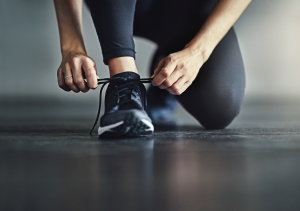Will Exercise Help the Brain Grow: Exercise and Ketones

Julia Basso – PhD
Exercise and Ketones
I am intrigued by the body-brain connection and am constantly thinking about how all of the physiological things that happen in our body from exercise like burning fat and building muscle contribute to exercise-induced improvements in cognitive functioning. One piece of the puzzle that I have written about previously is brain-derived neurotrophic factor (BDNF). BDNF is a protein that serves as a growth factor, helping our brain cells to grow and develop into fully formed and functional neurons. BDNF is encoded by the BDNF gene.
Nucleotides and the Hippocampus
Genes are made up of unique combinations of nucleotides (adenine, cytosine, guanine, and thymine) that then through the process of transcription and translation become proteins – like BDNF. Exercise increases BDNF levels in the brain, especially in the area of the hippocampus, a brain region integral to our ability to learn and remember. This piece of information is exciting, but for me, there is a disconnect between going for a run and more BDNF in my hippocampus. A very new piece of scientific research highlighted in Gretchen Reynold’s New York Times article, How Exercise May Help the Brain Grow Stronger (http://well.blogs.nytimes.com/2016/06/15/how-exercise- may-help- the-brain- grow-stronger/?_r=0), helps to connect the dots.
Evolution and Physical Activity
Thinking about physical activity as it relates to evolution helps to clarify the picture as to why it may provide so many beneficial effects for our bodies and brains. Our ancestors were certainly not hopping on treadmills for a quick workout. Rather, they were stalking and hunting prey or running from predators. Sleiman and colleagues frame this picture as follows: “…from an evolutionary perspective, [physical activity and learning and memory] needed to be tightly intertwined to ensure the survival of animal species. Indeed, physical effort usually occurred in response to an imminent danger. Responding to that danger not only required running, but also necessitated better functioning of the brain through increased plasticity in order to adapt to new sources of stress, to learn to avoid dangers or better respond to them, and to map surroundings and learn the locations of hazards. All of these responses require improved memory.”
Increasing Growth Factors
Theoretically, this connection makes sense, but practically, how does exercise increase growth factors such as BDNF that encourage our brains to grow in ways that support improvements in learning and memory? To explore this question, scientists in Dr. Moses Chao’s laboratory at the New York University Langone Medical Center exposed mice to a month-long voluntary wheel running experience and then examined their brains (Sleiman et al., 2016).
First, they confirmed that exercise increased BDNF in the hippocampus. Second, they discovered that exercise increases the ketone body, D-β-hydroxybutyrate (DBHB), in the hippocampus. When we exercise, glucose is used as our primary fuel source. However, when this supply runs out, our bodies resort to burning fat. As a result of this fat burn, ketones build up in our blood and urine. By directly administering DBHB to the brain (or slices of the brain in a dish), Sleiman and colleagues determined that increasing ketones directly causes increases in BDNF.
Activating Genes
Next, the scientists wanted to explore exactly how DBHB causes increases in BDNF. They looked to a mechanism known as histone acetylation, which is a process that helps to turn on genes so that they become active. Interestingly, they found that exercise decreases histone deacetylase levels in the hippocampus. Histone deacetylase works to turn off genes, so decreasing these inhibitors actually promotes gene expression. By directly applying DBHB to neurons, they discovered that this ketone directly decreased the activity of histone deacetylase, which in turn led to increased levels of BDNF. These findings suggest that exercise is actually working at the level of our genes to promote positive changes in the brain. This is known as an epigenetic phenomenon.
The Body and Brain Are Connected!
This research presents a heap of details (and more that I did not include) to express a simple concept…the body and brain are connected! When we exercise and burn fat, the liver produces molecules known as ketones that then enter our blood stream and travel to the brain where they act on genes to increase levels of growth factors that make us smarter. Good work exercise! This research suggests then that the best type of exercise for brain function is fat-burning exercise. Research shows that one of the best ways to burn fat is to perform a combination of weight training and intense aerobic exercise such as high-intensity interval training (Boutcher, 2011). Future research will be needed to determine whether fat loss is influential in causing exercise-induced improvements in learning, memory, and cognition. In the meantime, go get your fat burn on!
References
Boutcher, S. H. (2010). High-intensity intermittent exercise and fat loss.Journal of obesity, 2011.
Reynolds, G (2016). How Exercise May Help the Brain Grow Stronger. The New York Times: http://well.blogs.nytimes.com/2016/06/15/how-exercise- may-help- the-brain- grow-stronger/?_r=0
Sleiman, S. F., Henry, J., Al-Haddad, R., El Hayek, L., Haidar, E. A., Stringer, T., … & Ninan, I. (2016).
Exercise promotes the expression of brain derived neurotrophic factor (BDNF) through the action of the ketone body β-hydroxybutyrate. eLife, 5, e15092.You Might Like:
















